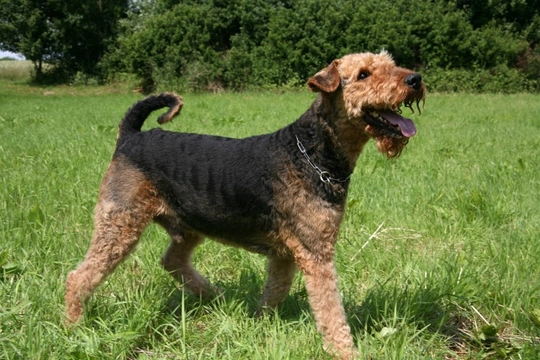
Umbilical hernia in Dogs
There are certain breeds that seem to be more predisposed than other breeds to inheriting a disorder known as an Umbilical Hernia. It's a hereditary disorder that affects the muscle wall of a dog’s belly button which leaves an opening there. This in turn allows the contents of the abdomen to pass through which causes all the problems. Umbilical hernias can be either complicated or uncomplicated and once diagnosed, a vet would then decide on the best course of action to correct the problem if they think it necessary.
Signs of a Problem
As previously mentioned, there are two types of umbilical hernias with the first being referred to as complicated"" and the second being ""uncomplicated"". When the hernia is complicated, it means the contents found in a dog's abdominal cavity has passed through the tear or opening in the muscle wall before becoming snagged. Uncomplicated umbilical hernias are soft swellings found around a dog's belly button. These swellings can be small or they can be that much larger. On top of this they can develop only to disappear again and all the while a dog is healthy showing no signs of being under the weather whatsoever.
The symptoms associated with a complicated umbilical hernia can often include the following:
- Pain around the belly button
- Warm to the touch where swelling occurs around a belly button
- Lack of appetite
- Vomiting
- Depression
The Causes
Most dogs diagnosed with umbilical hernias have inherited the condition from their parents. However, these hernias can also be caused by trauma which is something a vet would investigate when they first examine a dog suspected of suffering from the condition.
Breeds Most at Risk of Developing Umbilical Hernias
As previously mentioned, some breeds appear to be more predisposed to inheriting the condition than other breeds although why this is so remains a bit of a mystery. The breeds more likely to develop umbilical hernias include the following:
- Airedale Terrier
- Basenji
- Pekingese
- English Bulldog
Diagnosing the Problem
A vet would ideally need to have a dog's ancestry and examine a dog's abdomen paying special attention to their belly buttons. If they find a soft swelling around the umbilical area, the chances are the vet would diagnose the problem as being an uncomplicated hernia and as such it would not be necessary for any further investigation. However, occasionally, a vet might recommend taking X-rays or doing an abdominal ultrasound which would allow them to see if any abdominal contents have become trapped in an opening in the muscle wall in which case the diagnosis would be the “complicated” form of the condition.
Treatment Options
When it comes to treating umbilical hernias, the end goal would be to correct an opening in the muscle wall making sure any abdominal content is put back where it belongs However, this type of hernia can spontaneously close without the need of any surgical intervention when dogs are around six months old. If the hernia is small, a vet might not need to correct it surgically either. With this said, any dog with an umbilical hernia should not be used in a breeding programme because the condition is known to be hereditary and therefore parents may well pass on the problem on to their offspring.
""



